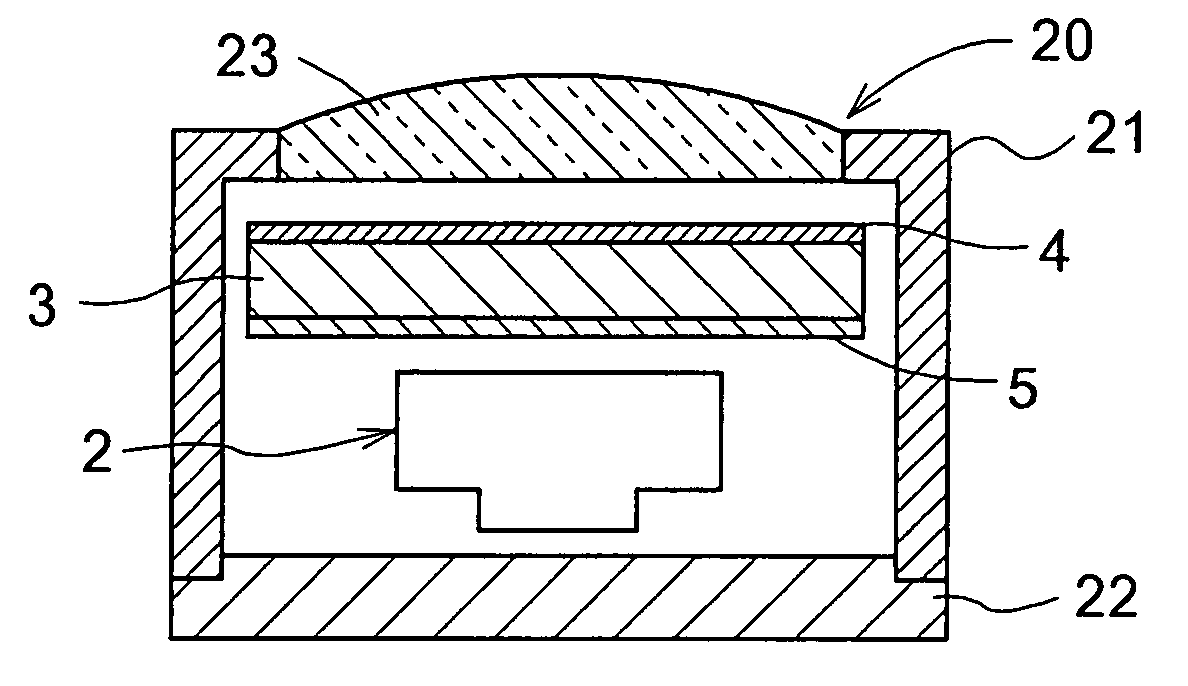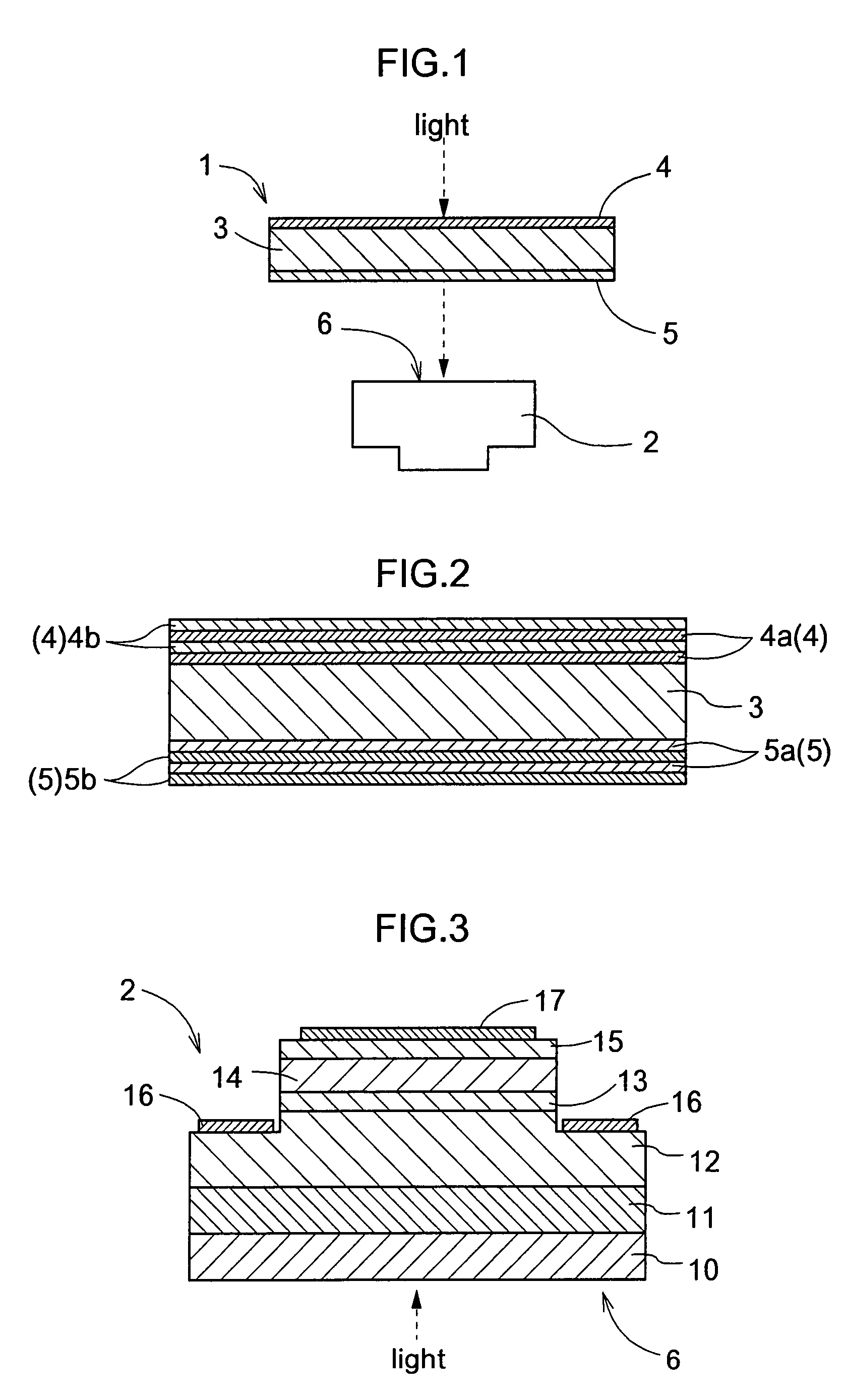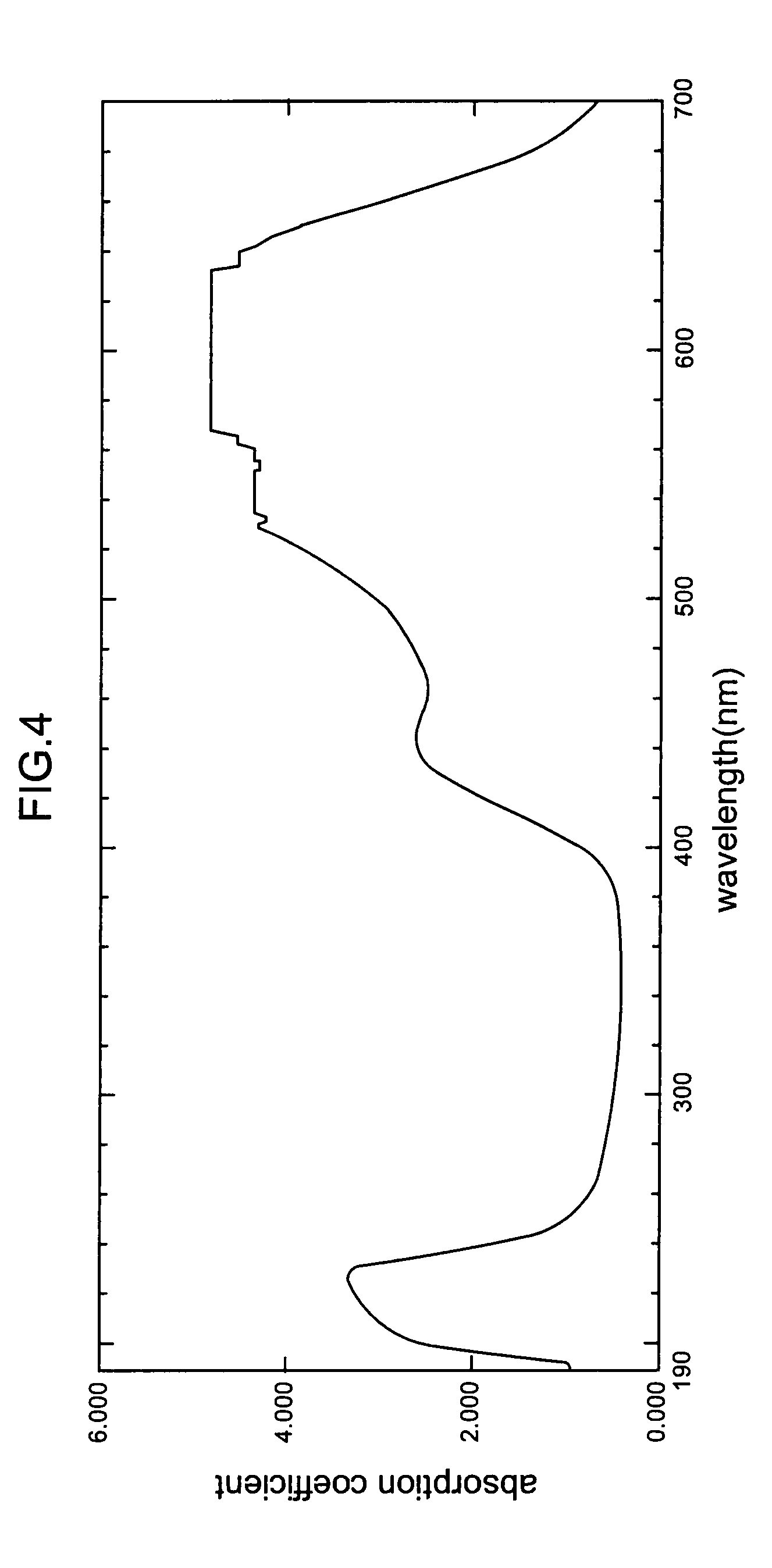Filter function-equipped optical sensor and flame sensor
a filter device and optical sensor technology, applied in the field of photosensors and flame sensors, can solve the problems of cracks, narrow wavelength ranges, and inability to fully obtain the above-described sensitivity difference, and achieve the effect of high resistance (environmental resistance) and effective detection
- Summary
- Abstract
- Description
- Claims
- Application Information
AI Technical Summary
Benefits of technology
Problems solved by technology
Method used
Image
Examples
Embodiment Construction
[0047]A photosensor relating to the present invention will be described with reference to the accompanying drawings.
[0048]FIGS. 1 through 3 illustrate a construction of a photosensor including a filter device 1 and a light receiving device 2. The filter device 1 comprises a colored glass filter 3 and a first interference filter structure 4 deposited on at least one face of the filter 3, the first interference filter structure 4 being comprised of a plurality of light transmitting layers 4a, 4b stacked on each other and configured to be capable of shielding light of a predetermined first wavelength range. Further, the photosensor illustrated in FIG. 1 and FIG. 2 includes also a second interference filter structure 5 deposited on the other face of the colored glass filter 3 than the one face on which the first interference filter structure 4 is deposited, the second interference filter structure 5 being comprised of a plurality of light transmitting layers 5a, 5b and configured to be ...
PUM
 Login to View More
Login to View More Abstract
Description
Claims
Application Information
 Login to View More
Login to View More - R&D
- Intellectual Property
- Life Sciences
- Materials
- Tech Scout
- Unparalleled Data Quality
- Higher Quality Content
- 60% Fewer Hallucinations
Browse by: Latest US Patents, China's latest patents, Technical Efficacy Thesaurus, Application Domain, Technology Topic, Popular Technical Reports.
© 2025 PatSnap. All rights reserved.Legal|Privacy policy|Modern Slavery Act Transparency Statement|Sitemap|About US| Contact US: help@patsnap.com



